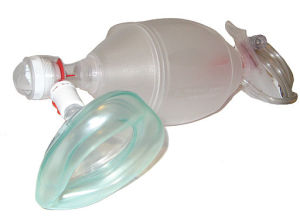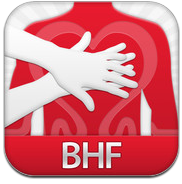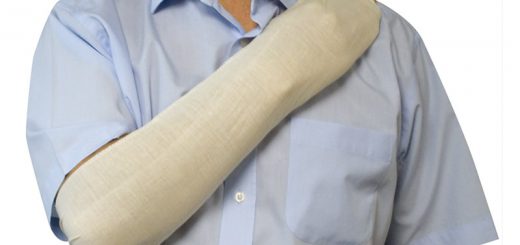Advanced first aid: Using a Bag Valve Mask (BVM)
 In situations where a patient is apneic or is not ventilating adequately, positive pressure ventilation (PPV) using a bag valve mask (BVM) can be a lifesaver. Although it may seem easy enough to use a bag-valve mask device, correctly ventilating a patient may be a little trickier than you think.
In situations where a patient is apneic or is not ventilating adequately, positive pressure ventilation (PPV) using a bag valve mask (BVM) can be a lifesaver. Although it may seem easy enough to use a bag-valve mask device, correctly ventilating a patient may be a little trickier than you think.
When to use a bag valve mask (BVM)
Positive pressure ventilation is used to provide support to patients who are not breathing or breathing inadequately. In some cases, such as if the patient does not have any respiratory effort, it will be obvious PPV needs to be started. But in some situations, a spontaneously breathing patient may also need PPV support, if their respirations are weak or they are struggling to breathe. A bag valve mask is a commonly used device during a cardiac arrest as it enables first responders to deliver a higher concentration of oxygen to the patient than by performing rescue breaths.
Using a bag valve mask correctly
There is a little more to ventilating a patient than just squeezing the bag-valve mask. If you are squeezing the bag, but the airway is not open, you are not doing much good. Before you place the mask over the patient’s nose and mouth, open the airway!
If there is not a suspected neck or spine injury, use the head tilt/chin lift method. This technique involves placing the tips of the fingers under the chin and the other hand on the patient’s forehead. Carefully, lift the chin and pull the jaw forward, while simultaneously tilting the head back. In the case of a spine injury, use the jaw thrust method, which involves moving the lower jaw forward without tilting the head back.
After the airway is open, hold the mask over the nose and mouth using you thumb and index finger, which should form a “C” shape. Use your other fingers to hold the patient’s head in the proper position. Squeeze the bag about 10 to 12 times a minute, which should be adequate for most patients. Each breath should take around 1 second.
Do’s and Don’ts of PPV
Do attach the bag to an oxygen source (normally a portable oxygen cylinder)
Do use an oral or nasal airway to keep the airway patent (if trained to do so)
Do watch for chest rise and fall and improved color to assess whether you are ventilating properly.
Do attach a pulse oximeter to the patient to monitor oxygen level.
Don’t over ventilate the patient, which can lead to complications including gastric distension.
Don’t push down hard on the mask. You may inadvertently move the head and block the airway.





